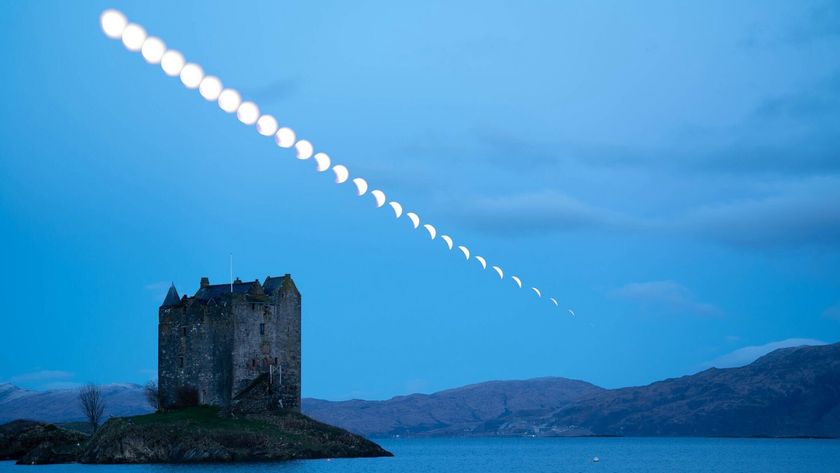Space Station Crosses Moon's Face in Stunning New Photo

An amazing new photograph shows the International Space Station (ISS) crossing in front of the bright and seemingly enormous moon.
We're used to seeing images taken from the space station — astronauts often post them on social media — but photos of the orbiting lab from Earth are rarer and take much more preparation.
Amateur astrophotographer Dylan O'Donnell took the stunning photo on June 30 from Byron Bay in New South Wales, Australia, using a Canon 70D camera attached to the rear cell of a Celestron 9.25-inch (235-millimeter) telescope.

O'Donnell received an alert for the precise to-the-second timing of the space station's flyover online. He'd been waiting for a year for such an opportunity, O'Donnell wrote on his website.
"If you think that it might be a case of sitting there with your camera and a clock, with one hand on the shutter release, you’d be absolutely correct!" O'Donnell wrote. "The ISS only passed over the moon for 0.33 seconds as it shoots by quite quickly. Knowing the second it would pass, I fired a 'burst' mode of exposures, then crossed my fingers and hoped it would show up in review — and it did!
O'Donnell was able to sharpen the image of the moon and enhance its colors to depict its complexity and texture by combining those images using astrophotography software with ones he took of the moon just before and after the transit.
He used the website Calsky.com to pinpoint the flyover's timing — a strategy that other astrophotographers have found success with in the past. (This spectacular composite photo of the ISS crossing the sun's face is one example.)
Get the Space.com Newsletter
Breaking space news, the latest updates on rocket launches, skywatching events and more!
O'Donnell's photo has made quite a splash, appearing on a number of news sites and even being featured on The Weather Channel — all because one photographer was prepared with a camera setup and knew what to look for.
Editor's Note: This article was updated to correct the following error: The telescope's aperture was 9.25 inches which is 235 millimeters, not 235 centimeters.
Email Sarah Lewin at slewin@space.com or follow her @SarahExplains. Follow us @Spacedotcom, Facebook and Google+. Original article on Space.com.
Join our Space Forums to keep talking space on the latest missions, night sky and more! And if you have a news tip, correction or comment, let us know at: community@space.com.

Sarah Lewin started writing for Space.com in June of 2015 as a Staff Writer and became Associate Editor in 2019 . Her work has been featured by Scientific American, IEEE Spectrum, Quanta Magazine, Wired, The Scientist, Science Friday and WGBH's Inside NOVA. Sarah has an MA from NYU's Science, Health and Environmental Reporting Program and an AB in mathematics from Brown University. When not writing, reading or thinking about space, Sarah enjoys musical theatre and mathematical papercraft. She is currently Assistant News Editor at Scientific American. You can follow her on Twitter @SarahExplains.









